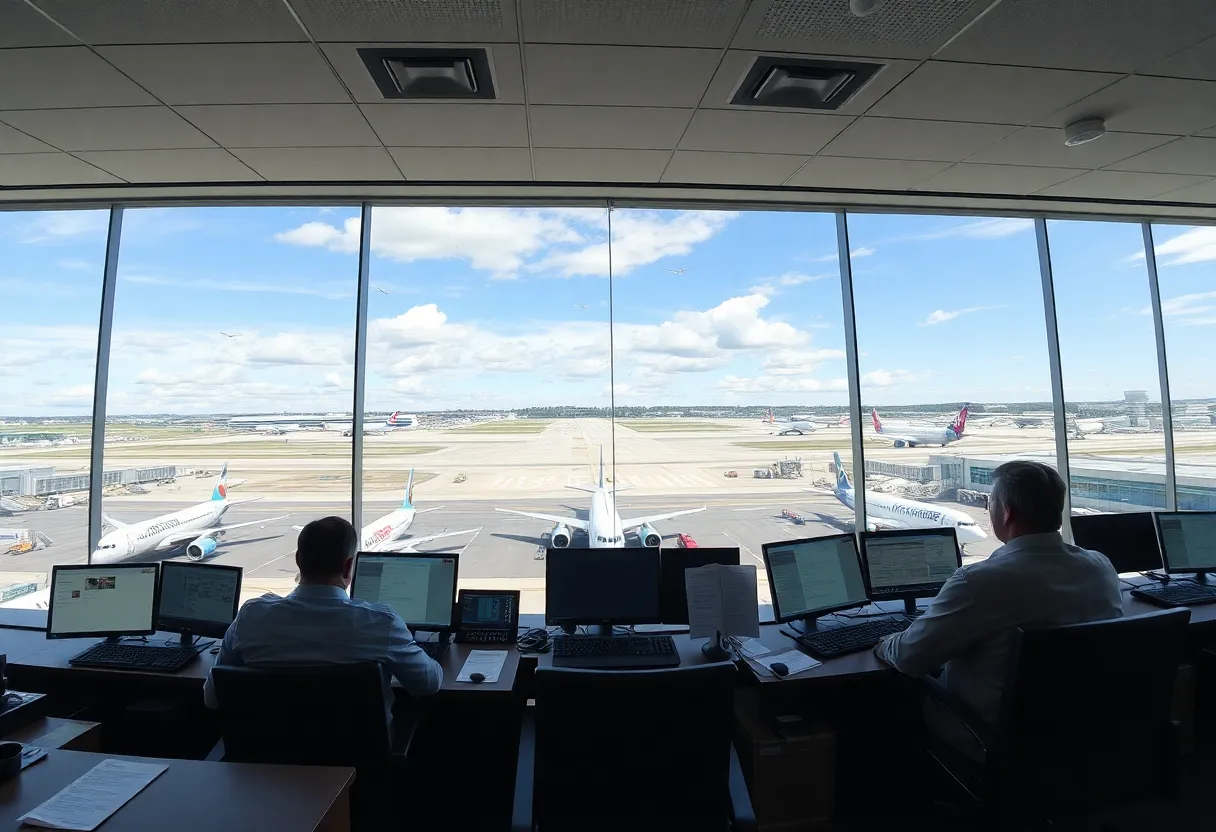News Summary
Kansas City International Airport (MCI) is setting a positive example in air traffic control staffing amid national shortages. With 39 controllers exceeding the FAA’s minimum requirement of 26, MCI is nearing the optimal target. In contrast, staffing issues persist nationwide, highlighted by a recent tragic mid-air collision near Washington, D.C. Despite challenges elsewhere, Kansas City strives to keep skies safe with adequate staffing, as political discussions around FAA practices surface in the wake of these incidents.
Kansas City Stands Tall in Air Traffic Control Staffing
Kansas City is making headlines for a positive reason in the midst of national air traffic control staffing concerns. At the bustling Kansas City International Airport (MCI), the air traffic controllers are fully equipped and doing their best to keep everything running smoothly. A recent report from 2023 shows that MCI boasts more air traffic controllers than the minimum requirements set by the Federal Aviation Administration (FAA), ensuring the skies over Kansas City are as safe as possible.
Adequate Staffing Levels Shown
Currently, MCI has a team of 39 dedicated controllers, including trainees, which comfortably exceeds the FAA’s minimum staffing requirement of 26. While there’s always room for improvement, the airport has almost reached the optimal staffing target of 40 controllers that the Collaborative Resource Workgroup (CRWG) set for MCI.
In contrast, other regions face challenges. Just recently, a tragic mid-air collision occurred near Washington, D.C.’s Reagan National Airport, which resulted in the loss of 67 lives, including those aboard an American Airlines flight and an Army Black Hawk helicopter. This horrendous incident has sparked discussions nationwide about the reliability and adequacy of air traffic control staffing, especially when it’s revealed that the staffing levels at Reagan during the crash were not typical for the volume of air traffic at that time.
National Concerns Over Staffing
Across the country, the staffing situation gets a little murkier. Reports indicate that the Olathe air route traffic control center, which oversees air traffic for Kansas City, is currently about 83% staffed with 199 controllers, falling short of the FAA’s target of 234. Similarly, Wichita’s air traffic control tower has 29 controllers, reaching about 75% of CRWG’s target of 40 and the FAA’s target of 30. So, while Kansas City is faring well, there’s still a noticeable gap in other areas.
Worryingly, national trends show that the FAA had around 1,000 fewer fully certified controllers in August 2023 than a decade ago, despite increased air traffic complexities. Staffing shortages can often be traced back to budget cuts from 2013, the impacts of the COVID-19 pandemic, and a wave of retirements from controllers hired after the 1981 air traffic controller strike. With the pay caps at the FAA set at $225,700, the job is just not as tempting compared to the private sector.
Grim Reality of Overtime and Fatigue
In an effort to navigate these staffing shortages, more than 40% of air traffic controllers end up working six-day weeks, relying on mandatory overtime to fill gaps. The situation calls for attention as the commitment to public safety is put to the test. New graduates starting at the FAA earn just over $55,000, while certified controllers in Kansas City can make between $72,000 and over $209,000 after some years on the job. Clearly, there’s a lot at stake!
Political Discussions in the Aftermath
Following the recent tragic crash, political conversations have emerged discussing staffing and hiring practices within the FAA, pointing fingers at diversity initiatives as potential contributors to the controller shortage. However, no concrete evidence has surfaced to support these claims. Democratic leaders are rallying for focused discussions based on facts rather than politicized narratives.
Keeping the Skies Safe
The operational efficiency of the air traffic control centers is now under scrutiny after the deadly incident. Government officials are exploring every angle to understand the protocols and staffing levels during the critical moments leading up to the crash. Audio recordings from air traffic control leading up to the event indicate attempts to communicate with the helicopter involved, with silence noted before the tragic collision.
In Kansas City, while the airport manages to maintain robust staffing levels, the ongoing national shortage and concerns about operational integrity need attention. So as travelers take to the skies in and out of MCI, one can hope that the safety of everyone in the air remains the top priority.
Deeper Dive: News & Info About This Topic
HERE Resources
Kansas City Council Nears Vote on Enhanced Police Patrols
Prairie Village Police Chase Ends with Two Suspects Arrested
Border Patrol Agent Tragically Killed in Shootout
Large Fire Erupts Near Osaka’s Iconic Tsutenkaku Tower
Panama’s President Mulino Rejects Discussion Over Panama Canal Control with US President-Elect Trump
Developer Withdraws Major Project Amid River Bend Controversy
Kansas City Man Faces Felony Charges After Road Rage Shooting Incident
Kansas City Driver Injured in Rollover Crash After Falling Asleep at the Wheel
Weather Woes in Kansas City: Underground Caves Provide Safe Haven for Local Businesses
Surge in Conspiracy Theories Linking Recent Hurricanes to Chemtrails and Election Manipulation
Additional Resources
- Kansas City Star: Local News
- Wikipedia: Air Traffic Control
- Kansas City Star: Politics & Government
- Google Search: Air Traffic Control Staffing Shortage
- News Break: Fort Riley Controller Reflection
- Encyclopedia Britannica: Air Traffic Control
- MSN: FAA New Rules
- Google News: FAA Air Traffic Control







